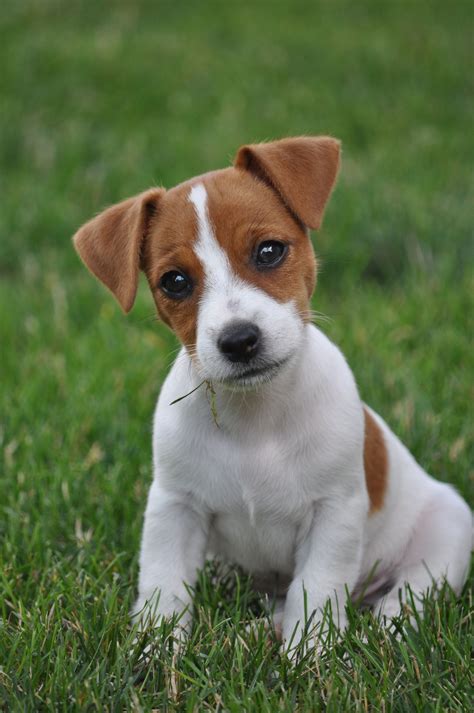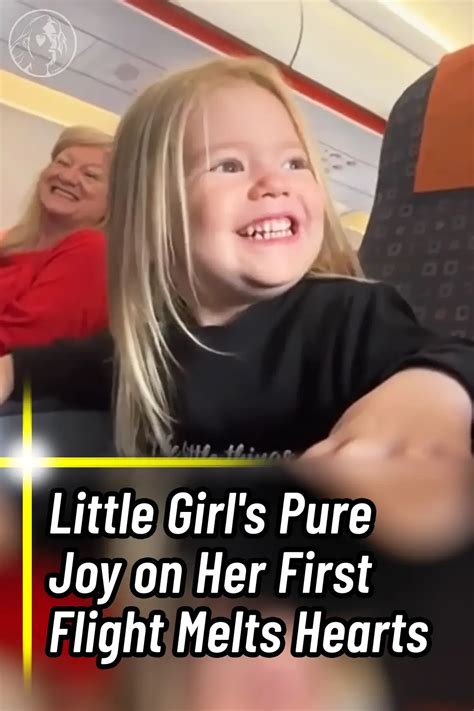
A resourceful border collie named Gus has found a unique sanctuary beneath the couch in his home to escape the boisterous energy of his four younger siblings, all husky puppies. Gus’s owners have noted that the puppies, while energetic and playful, respect Gus’s need for space and generally avoid bothering him in his chosen refuge.
Gus, a five-year-old border collie, has become a master of avoidance as he navigates life with his four rambunctious housemates. The decision to seek refuge under the couch came naturally, as the space provides a quiet, personal area away from the constant activity of the husky puppies. The owners detailed that Gus’s strategy isn’t one of aggression or dominance, but rather a clever way to maintain his peace and sanity amidst the chaos. This behavior has been widely shared and celebrated on social media, with many users praising Gus’s ingenuity and the puppies’ surprising understanding of boundaries.
The introduction of the husky puppies into Gus’s life marked a significant change in the household dynamics. Before their arrival, Gus enjoyed a quieter, more predictable routine. The puppies, with their boundless energy and need for constant play, disrupted this established order. While Gus gets along well with his owners, he found the puppies’ exuberance overwhelming at times.
“He just likes to be away from them sometimes,” said one of the owners. “He still plays with them, but he needs his space.” This need for personal space is a common trait among dogs, particularly those who are older or more introverted. The ability for Gus to carve out his own territory within the home is essential for his well-being and mental health.
The owners have been careful to ensure that Gus’s needs are met, providing him with plenty of opportunities for rest and relaxation. They also encourage the puppies to respect Gus’s boundaries, teaching them to approach him calmly and to give him space when he retreats to his sanctuary under the couch.
The puppies, despite their young age and high energy levels, seem to understand Gus’s need for space. They generally leave him alone when he is under the couch, allowing him to decompress and recharge. This behavior suggests a level of social intelligence and empathy that is remarkable for puppies.
The story of Gus and the husky puppies has resonated with many dog owners who have experienced similar situations in their own homes. It highlights the importance of providing pets with the space and resources they need to thrive, as well as the remarkable ability of animals to adapt to new and challenging environments.
The owners have documented Gus’s adventures with the puppies on social media, sharing videos and photos of him interacting with his siblings and retreating to his under-couch haven. These posts have garnered widespread attention, with many users praising Gus’s ingenuity and the puppies’ good behavior. The story has also sparked discussions about the importance of understanding and respecting the needs of individual animals within a multi-pet household.
Expanded Details and Context:
The arrival of new pets into a household is almost always a delicate balancing act. Existing pets, accustomed to a certain routine and level of attention, must adjust to sharing their space and resources with newcomers. This transition can be particularly challenging when the new pets are significantly younger and more energetic, as was the case with Gus and the husky puppies.
Border collies, like Gus, are known for their intelligence, herding instincts, and high energy levels. They thrive on having a job to do and can become restless or anxious if they are not given enough mental and physical stimulation. While Gus undoubtedly enjoys playing with the puppies at times, their constant need for attention and activity can be overwhelming for him.
The choice of the couch as a refuge is significant. Couches are often seen as comfortable and safe spaces, offering a sense of security and privacy. By retreating under the couch, Gus is able to create a personal haven where he can escape the noise and activity of the puppies. The confined space also provides a sense of protection, allowing him to relax and decompress without feeling constantly on guard.
The puppies’ understanding of Gus’s boundaries is particularly noteworthy. Young animals are often driven by instinct and may not be aware of the needs of older or more introverted members of the group. The fact that the husky puppies generally leave Gus alone when he is under the couch suggests that they are learning to recognize and respect his signals. This behavior is likely the result of both innate social intelligence and the owners’ efforts to teach them appropriate interactions.
The owners’ role in facilitating a harmonious relationship between Gus and the puppies is crucial. By providing Gus with a safe and comfortable refuge, they are helping him to manage his stress and maintain his well-being. They are also teaching the puppies important lessons about respecting boundaries and understanding the needs of others.
The story of Gus and the husky puppies offers valuable insights into the dynamics of multi-pet households. It highlights the importance of:
- Providing individual space and resources: Each pet should have its own designated area where it can retreat to for rest and relaxation. This is especially important for older or more introverted animals who may need more personal space.
- Understanding individual needs: Pets have different personalities and needs. It is important to be aware of these differences and to provide each pet with the care and attention it requires.
- Teaching appropriate interactions: Pet owners should actively teach their pets how to interact with each other in a respectful and appropriate manner. This may involve setting boundaries, redirecting unwanted behaviors, and rewarding positive interactions.
- Creating a safe and supportive environment: The home should be a safe and supportive environment for all pets. This means providing them with plenty of opportunities for exercise, mental stimulation, and social interaction, as well as ensuring that their basic needs are met.
The social media attention that Gus’s story has received underscores the universal appeal of animal stories that highlight intelligence, empathy, and the bonds between different species. It also serves as a reminder of the important role that pets play in our lives, providing us with companionship, love, and endless entertainment.
Further Analysis:
Gus’s behavior is a testament to his intelligence and adaptability. He has recognized a problem (the overwhelming energy of the puppies) and found a creative solution (retreating under the couch). This demonstrates a level of problem-solving ability that is characteristic of border collies.
The puppies’ behavior is also significant. Their willingness to respect Gus’s space suggests that they are capable of learning and adapting to social cues. This is a positive sign for the future of their relationship with Gus.
The owners’ role in this situation cannot be overstated. They have created a home environment where Gus feels safe and supported, and they have actively worked to teach the puppies how to interact with him in a respectful manner. This is a model for responsible pet ownership and highlights the importance of understanding and meeting the needs of all animals in the household.
The story of Gus and the husky puppies is not just a heartwarming tale of animal antics. It is also a valuable lesson in animal behavior, social dynamics, and the importance of responsible pet ownership. It reminds us that animals are capable of complex emotions and behaviors, and that we have a responsibility to provide them with the care and support they need to thrive.
The Psychology of Retreat:
Gus’s decision to retreat under the couch is a fascinating example of coping mechanisms in animals. When faced with stress or overwhelming stimuli, many animals will seek out enclosed spaces that offer a sense of security and control. This behavior is rooted in evolutionary biology, as confined spaces provide protection from predators and other threats.
For Gus, the space under the couch likely serves as a similar refuge. It allows him to escape the noise and activity of the puppies, providing a quiet and predictable environment where he can relax and recharge. The confined space also gives him a sense of control, as he can easily monitor his surroundings and avoid unwanted interactions.
This behavior is not unique to dogs. Many animals, including cats, rabbits, and even humans, will seek out enclosed spaces when they feel stressed or overwhelmed. This is a natural and adaptive response that helps them to cope with challenging situations.
The Importance of Enrichment:
While Gus has found a coping mechanism in his under-couch refuge, it’s important to consider the broader picture of his well-being. Enrichment plays a crucial role in the lives of intelligent and active breeds like border collies. Ensuring Gus receives adequate mental and physical stimulation is essential for preventing boredom, anxiety, and other behavioral problems.
Enrichment activities can include:
- Regular exercise: Border collies need plenty of exercise to burn off their energy. This can include walks, runs, playing fetch, or participating in dog sports like agility or herding.
- Mental stimulation: Border collies are highly intelligent and need to be challenged mentally. This can include puzzle toys, training sessions, or interactive games.
- Social interaction: While Gus may need a break from the puppies, he still needs social interaction with his owners and other dogs. This can include walks in the park, playdates with other dogs, or simply spending time with his family.
By providing Gus with a variety of enrichment activities, the owners can help him to stay happy, healthy, and well-adjusted. This will also help to reduce his stress levels and make him more tolerant of the puppies’ energy.
The Role of Training:
Training is another important aspect of responsible pet ownership, particularly in multi-pet households. Training can help to establish clear rules and boundaries, reduce conflict, and promote positive interactions between pets.
In the case of Gus and the husky puppies, training can be used to:
- Teach the puppies to respect Gus’s space: This can involve teaching them commands like “leave it” or “go away” when Gus is under the couch.
- Teach Gus to tolerate the puppies’ energy: This can involve desensitization and counter-conditioning techniques to help Gus become more comfortable around the puppies.
- Establish clear rules for playtime: This can involve setting limits on how rough the puppies can play with Gus and providing them with alternative outlets for their energy.
By investing in training, the owners can create a more harmonious and peaceful environment for all of their pets.
Long-Term Considerations:
The story of Gus and the husky puppies is a snapshot in time. As the puppies grow older and mature, their relationship with Gus will likely evolve. It is important for the owners to continue to monitor the dynamics between the dogs and to adapt their management strategies as needed.
Some potential long-term considerations include:
- The puppies’ energy levels: As the puppies mature, their energy levels may decrease, making them less overwhelming for Gus.
- Gus’s tolerance: Gus may become more tolerant of the puppies’ energy over time.
- Changes in the home environment: Changes in the home environment, such as moving to a new house or adding new family members, can impact the dynamics between the dogs.
By remaining vigilant and proactive, the owners can ensure that Gus and the husky puppies continue to live together in peace and harmony.
Beyond the Couch: Alternative Safe Spaces:
While the couch has become Gus’s chosen sanctuary, providing multiple safe spaces throughout the home is crucial for his overall well-being. These spaces should be easily accessible, comfortable, and free from the puppies’ constant attention.
Examples of alternative safe spaces include:
- A dog crate: A crate can provide a den-like environment where Gus can retreat to for rest and relaxation.
- A dog bed in a quiet corner: A comfortable dog bed placed in a quiet corner of the house can offer a peaceful escape.
- A raised platform: A raised platform can give Gus a vantage point from which to observe his surroundings without being directly involved in the puppies’ activities.
By offering a variety of safe spaces, the owners can empower Gus to choose the environment that best suits his needs at any given time. This will help him to feel more secure and in control, reducing his stress levels and promoting his overall well-being.
The Impact of Breed Characteristics:
The breed characteristics of both Gus and the husky puppies play a significant role in the dynamics of their relationship. Border collies, as mentioned earlier, are highly intelligent, energetic, and driven by a need to work. Huskies, on the other hand, are known for their independence, endurance, and strong pack instincts.
These breed differences can contribute to both the challenges and the opportunities in their relationship. Gus’s high energy and need for work may make him less tolerant of the puppies’ constant play, while the puppies’ pack instincts may lead them to seek out Gus’s attention and affection.
Understanding the breed characteristics of each dog can help the owners to better manage their interactions and provide them with the specific care and attention they need.
The Power of Positive Reinforcement:
Positive reinforcement is a powerful tool for shaping behavior in both dogs and puppies. By rewarding desired behaviors, such as calm interactions and respecting boundaries, the owners can encourage the dogs to repeat those behaviors in the future.
Examples of positive reinforcement techniques include:
- Treats: Giving the dogs treats when they exhibit desired behaviors.
- Praise: Verbally praising the dogs when they exhibit desired behaviors.
- Affection: Giving the dogs affection, such as petting or cuddling, when they exhibit desired behaviors.
- Play: Engaging in play with the dogs when they exhibit desired behaviors.
By consistently using positive reinforcement, the owners can create a positive and rewarding learning environment for all of their pets.
The Importance of Consistency:
Consistency is key to successful multi-pet management. It is important for the owners to be consistent in their rules and expectations, and to enforce those rules consistently across all of their pets.
This can involve:
- Establishing clear boundaries: Setting clear boundaries for the dogs’ behavior and consistently enforcing those boundaries.
- Providing consistent routines: Maintaining consistent routines for feeding, exercise, and playtime.
- Using consistent commands: Using consistent commands when training the dogs.
By being consistent, the owners can create a predictable and stable environment for all of their pets, reducing stress and promoting harmony.
FAQ Section:
Q1: Why does Gus, the Border Collie, hide under the couch?
A: Gus hides under the couch as a refuge from the high energy and constant activity of his four husky puppy siblings. It provides him with a quiet, personal space where he can relax and escape the chaos. He needs his personal space as Border Collies are highly active dogs and can get overwhelmed.
Q2: Do the husky puppies bother Gus when he’s under the couch?
A: Generally, the husky puppies respect Gus’s space and leave him alone when he’s under the couch. This shows a surprising level of understanding and empathy for puppies.
Q3: What steps have Gus’s owners taken to help him adjust to the puppies?
A: Gus’s owners ensure he has plenty of opportunities for rest and relaxation. They also encourage the puppies to respect Gus’s boundaries and give him space when he retreats under the couch. They provide him with alternative safe spaces and monitor the dynamics between Gus and the puppies and adjust their management strategies as needed.
Q4: What can other pet owners learn from Gus’s situation?
A: The story highlights the importance of providing individual space and resources for each pet, understanding their individual needs, teaching appropriate interactions, and creating a safe and supportive environment in a multi-pet household.
Q5: How has Gus’s story been received on social media?
A: Gus’s story has garnered widespread attention on social media, with many users praising his ingenuity and the puppies’ good behavior. It has sparked discussions about the importance of understanding and respecting the needs of individual animals in multi-pet households.









